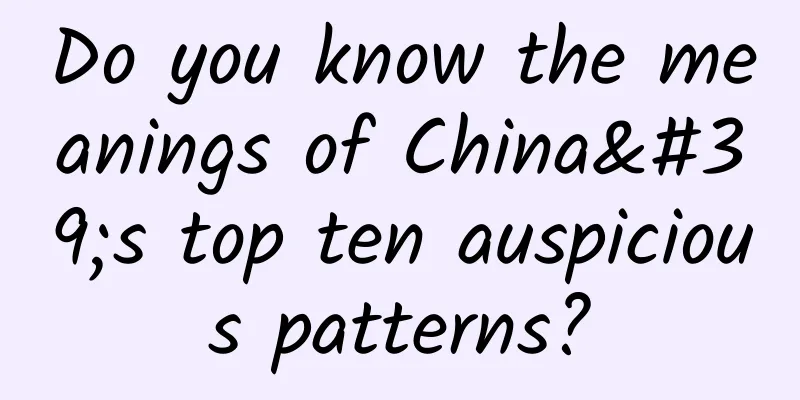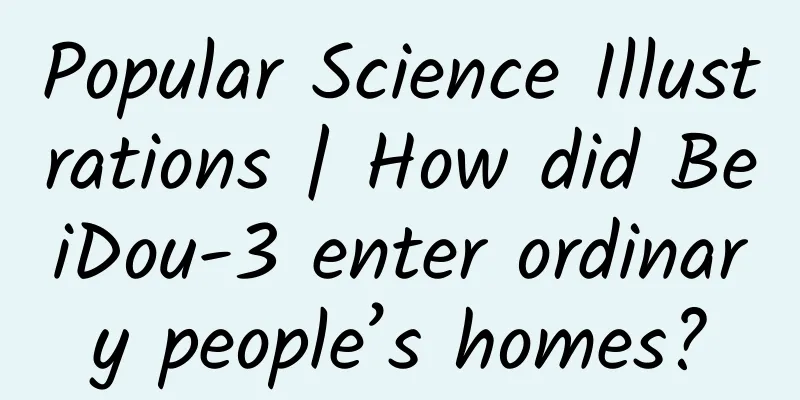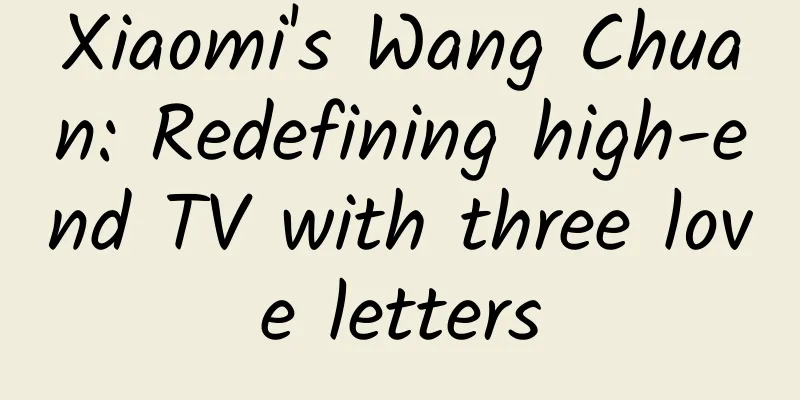Do you know the meanings of China's top ten auspicious patterns?

|
The ten auspicious patterns in ancient China generally include embroidered ball, peace and prosperity, three yangs, boy holding carp, harmony and unity, happiness from heaven, a house full of gold and jade, good luck in the room, five blessings and longevity, and continuous success in the imperial examinations. These auspicious patterns all express people's wishes for a better life. Let's explain the meaning of these auspicious patterns: 1 Hydrangea In ancient times, hydrangeas were considered auspicious and festive. In the Han Dynasty, there was an activity called lion dance with hydrangeas. According to the "Book of Han: Rites and Music", lion dance was popular among the people in the Han Dynasty. Two people acted as a lion, and one person held a colorful ball to amuse the lion. They jumped up and down, which was lively and interesting. In this way, it is roughly the same as modern lion dance. The pattern of "lion dance with hydrangeas" is also called "hydrangea brocade" or "hydrangea pattern", which means to ward off disasters and pray for blessings. 2 Peaceful Elephants Elephants have been regarded as auspicious animals since ancient times. They are heavy and steady, and can carry a treasure bottle. The treasure bottle refers to the legendary water purification bottle of Guanyin, which contains holy water and can bring good luck when sprinkled. "Ping" is also homophonic to "peaceful" in "peaceful", so there are sayings such as "peaceful elephants" and "happy elephants bring peace", which means peace in the world and prosperity for the people. 3 Three Yang Kaitai The pattern of San Yang Kai Tai is three sheep. The word "sheep" in ancient times is the same as "auspicious", which means auspiciousness. "Three sheep" is homophonic to "three yangs". Tai hexagram is Qian below and Kun above, and the first to third lines are three yang lines, so it is said "San Yang Kai Tai". Tai hexagram means that heaven and earth are connected and all things are connected, and "San Yang Kai Tai" means that auspiciousness and good luck follow one after another. 4 Boy holding carp In the picture of a boy holding a carp, the word "fish" in carp has the same pronunciation as "surplus", which means a rich life and a prosperous family during the New Year. Every New Year, every household likes to hang a New Year picture of a boy holding a carp, which not only expresses the joy of celebration but also hopes for good luck in the coming year. 5 The Two Immortals of Harmony and Unity The Two Immortals of Harmony and Unity refer to the two eminent monks Hanshan and Shitou, symbolizing a harmonious family and a happy marriage. In ancient times, people would usually hang up pictures of harmony and unity during weddings, in the hope of a happy and harmonious marriage. 6 Good news from heaven In ancient times, spiders were called "happy spiders". There is a record in Lu Ji's "Shi Shu": "It is also called long-legged. People in Henei, Jingzhou call it the mother of joy. If this insect comes to wear people's clothes, it means that close guests are coming and there is joy." Therefore, people believe that spiders are a symbol of good luck, and the fall of a happy spider means "joy from the sky." 7. A House Full of Gold and Jade The pattern of "Jin Yu Man Tang" is golden fish filling the pond (golden fish full pond). "Fish" is homophonic to "jade", and "pond" is homophonic to "hall". Fish have been regarded as auspicious things since ancient times, and golden fish are more noble and auspicious. "Jin Yu Man Tang" means abundant wealth. 8. Good Luck This pattern is a chicken standing on a stone. “Chicken” is a homophone for “good luck” and “stone” is a homophone for “room”. “Good luck on the room” means the health and good fortune of the whole family. 9 Five Blessings for Longevity The pattern of Five Blessings Holding Longevity is five bats surrounding a Chinese character for longevity. “Fu” in bat is a homophone of “Fu”, and “Five Blessings” is explained in Book of Documents: Hong Fan as “Five Blessings: one is longevity, two is wealth, three is health and peace, four is good virtue, and five is a good fortune.” The meaning of Five Blessings Holding Longevity is good fortune and longevity. 10 Xidelianko The pattern of "Xi De Lian Ke" includes magpie, lotus and reed. In folk legends, magpie is a bird that can announce good news. "Lotus" and "lian" are homophones of each other. Reeds are connected to each other, so "lian ke" is homophone of "lianke". The patterns together form the auspicious pattern of "Xi De Lian Ke", which means that students will get good grades in exams one after another. |
>>: This disease cannot be inherited from parents, they look basically the same! Just because...
Recommend
Youzituan's high-yield Baijiahao money-making project, simple operation to achieve a monthly income of 5000+
Youzituan's high-yield Baijiahao money-making...
Spenser My personal branding course that earns me $100,000 a day
Spenser: My Personal Branding Course for Earning ...
2021 Tik Tok Hot-selling Live Broadcast Room Creation Plan Course
2021 Tik Tok Hot-selling Live Broadcast Room Crea...
If you have cancer in your body, your throat will know it first! If you have these 4 symptoms, you may have esophageal cancer.
Mr. Liu, 50 years old, was in good health and had...
Introduction to comic line drawing for beginners
This course will teach you how to draw line drawin...
Which POS machine company is good? How to judge?
When using a POS machine, if the selected machine...
Le Xiaobao Story Optical Machine Disassembly Review
As the first parent-child smart toy product launc...
MIT professor: Google's decision to develop self-driving cars was a mistake
Automation is so attractive that some people thin...
Analysis of Bilibili’s growth cases
The reason for dissecting this activity is that I...
Product Promotion Operation | How to improve user activity of low-frequency products?
Having 1 million users is not a problem. The real...
The Android version of WeChat 8.0.1 was updated two weeks later than the iOS version. Is iOS the more reliable one?
I just saw a message on the news app saying that ...
7 Predictions for Metaverse Immersive Marketing
According to the first principles, the biggest me...
Changan Mazda MAZDA EZ-6 sets new value standard for new energy joint ventures, makes global debut at Beijing Auto Show
On April 25, Changan Mazda's first electric s...
NetQin's Q1 net income increased by 11.8% year-on-year, and its entertainment business has begun to show results
In the early hours of this morning, NetQin offici...









